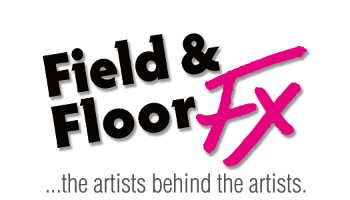
“The devil is inside the production value.” -Shirlee Whitcomb
Creating a truly dynamic production requires meticulous development of key elements. Concept, sound design, set design, and color work together to create a harmonious connection that envelopes the audience and tells a compelling story of What, How, and Why. Below, I break down production value and the key elements of design to share insight on developing an ovation-worthy production.
Production Value Production is all the elements of our craft that goes into a harmonious design. It is how all the pieces are related and help to bring ideas to life on the field or the floor. I like to think that a production is the producing of articles having exchange value. It’s how elements are organized and presented to create the most dramatic program possible. In our activity we have elements that if exchanged and intertwined, can truly help our audience to understand the WHY of the designer’s choices. Years ago, I had conversations about this with Shirlee Whitcomb, WGI’s Director of Color Guard Development. I remember we were discussing how imperative it is for program design to have production value as those are the elements that tell the story. Since our art form is created without words, the way to narrate that story, convey the message, or bring the idea to life is through production value. The elements of concept, sound design, set design, and color when carefully considered and thought out, can truly help to elevate and connect with the audience.
Concept When considering the overall concept remember this helps to drive all the choices made in the program. Concepts can be both literal or non-literal but taking the audience into account is important with how this can be delivered. It is important to think about what we want our audience to feel from the concept. How will the audience be involved with the process, taking into consideration the intellect, aesthetic, and emotional possibilities. What do we want the audience to take away or remember from the production? It is also important to consider the performers, their abilities and knowing their strengths so they can relate to the design. The concept can be connected with soundtrack, audio, color, props, set, equipment and movement choreography, as well as staging choices.
Sound Design Here we consider the strengths of our musicians on the field and the performers on the floor. It is important to choose music or soundtracks the performers can relate to and deliver. The pacing is imperative and have a strong beginning and ending. How we say “hello” and “goodbye” can set our units up for success and be remembered. Does the sound design keep our attention the entire time and help us to be unique and stand out?
Set Design The set design is another piece to a strong production. The set design is the blueprint for the program and can set the viewer up to better understand conceptual choices. The set design can provide a reference for the concept to develop, it can reference the staging, motion, and positioning of performers to maximize all the possibilities in the program. I like to consider the audience and ask myself the question, “How can I best design my set to set the viewer up?”. I want the audience to go on the journey with the performers and considering this answer helps to make those decisions of the set. Coordination is key and making sure the set reads from far. It is important to consider the venue your performers will participate in. I also like to design with the end in mind and thinking about the final setting the performers will deliver the program. When designers consider this, there can be more bang from the production. Also, knowing what the venue looks like and the arena is crucial. Knowing there is a tall black curtain behind the performers in Dayton or Indianapolis should be considered when designing the set to provide direction, clarity, and emphasis.
Colors Color within costuming, props, floors, and flags can partner and elevate the production value of the design. On the other hand, when color of all the elements is not carefully thought through it can make it very difficult to read and get full value of the program totality. Color can enhance the mood, provide contrast to read staging, drill, and movement. When colors are considered from costumes, to floor, to flags it can narrate the designer’s intent with clarity and have a powerful effect. How do the colors of the floor, costumes, flags, and props compliment the environment? Do you want color to pop from these components of design or purposefully blend to one another? It is important to always think how the colors can enhance the concept and design totality.
Considering production value and all the components helps me when story boarding and making those design decisions. I always remember Shirlee Whitcomb saying to me in 2007, “the devil is inside the production value”. She was so right about that! All the elements that are hidden in the details are so important. Something might seem simple at first look but may take more time and effort to complete than expected. When all the details in a production are considered, this can yield to great results that not only help us to understand the What and How of design, but also Why.
Adam Sage is an active choreographer, designer, and adjudicator in the pageantry arts. Adam has worked with numerous programs in the southeast including Tarpon Springs High School, East Lake High School, Seminole High School (1993 WGI A class Bronze medalists), Clearwater High School, Kell High School and Pope High School in Marietta, Georgia. Pope High School was the 2000 WGI Open class Silver medalists and the 2002 WGI World class Bronze medalists. Kell High School was the 2005 WGI A class Silver medalist. In addition, Adam also designed for Spanish River High School Winter Guard in Boca Raton, Florida (2009 Winter Guard International Scholastic A Silver medalists).Adam’s drum corps experience includes being a performing member of the Suncoast Sound from 1988 to 1989, and The Cadets of Bergen County from 1990 to 1991. He was the caption head for the Magic of Orlando from 1992 to 1993; caption head for the Crossmen from 1994 to 1995. Adam then spent 1996 through 2002 working with the Cavaliers Drum & Bugle Corps. Sage was also the caption head and designer for the Santa Clara Vanguard in 2003 and 2004. 2005 through 2008, he spent with the Phantom Regiment Drum and Bugle Corps as their caption head and designer. 2009-2011, he was the caption supervisor and designer with the Carolina Crown Drum and Bugle Corps. Adam was the color guard caption head and designer for the Madison Scouts from 2012-2014. Adam is also actively involved with Winter Guard International (WGI). He was the director of The Company Colour Guard from Tampa Bay, Florida from 1995 to 1999. The Company was a two time WGI World Champion in the A (1995) class and Open (1996) class. He was also the director of the Phantom Regiment Winter Guard in 2007 and 2008 and CrownGUARD in 2009 and 2010. Sage was also a member of the Emerald Marquis Winter Guard from 1990 to 1991. Adam Sage was the director and designer for the Kennesaw Mountain High School Color Guard in Kennesaw, Georgia 2003-2016 (2004 Winter Guard International Scholastic A World Champions, 2005 Winter Guard International Scholastic Open World Champions, 2006 Winter Guard International Scholastic World Class finalists, and the 2013 Winter Guard International Scholastic Open Bronze Medalists); and designer for the 2015 Boston Crusaders Drum and Bugle Corps, and 2017 and 2018 Santa Clara Vanguard Drum and Bugle Corps. Currently, he is the designer and choreographer for Park Vista High School and Winter Guard (FL), Yokohama Scouts Drum and Bugle Corps in Yokohama, Japan, Jupiter High School Band and Color Guard (FL), and artistic director and color guard co-director at Park Vista High School (FL). Adam Sage is a designer and color guard coordinator for the Phantom Regiment Drum and Bugle Corps. Adam is an adjudicator for Bands Of America and winter guard circuits throughout the country. When he is not teaching color guard, Adam is a second and third grade teacher in Parkland, Florida.
